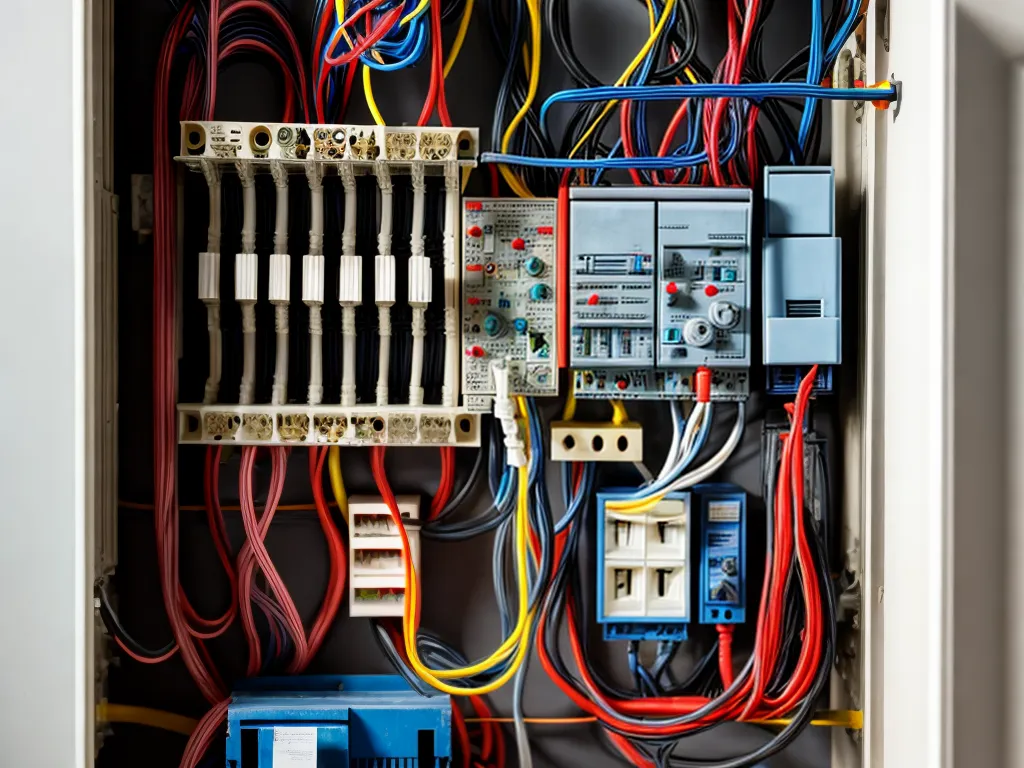
Working with an obsolete electrical control panel can present some unique challenges when troubleshooting issues. As components age and wear out, tracing problems back to the source requires careful inspection, testing, and deduction. With some key troubleshooting steps, you can overcome the difficulties posed by antiquated systems.
Understanding the Control Panel Layout
Older electrical panels often lack the intuitive layout and labeling of modern designs. Before troubleshooting the panel, take time to understand its layout and components. Some steps that can help are:
-
Examine wiring diagrams - Find any available schematics showing wire runs and connections. This provides a roadmap of the system.
-
Inspect components - Note the various relays, contactors, timers, and other parts. Determine the function of unclear components through testing.
-
Label parts - Add your own labels with tape/markers as you trace out connections. This documents the layout for future reference.
-
Analyze circuits - Figure out the purpose of each circuit. Follow conductors to understand current flow.
Thoroughly familiarizing yourself with the control panel provides a knowledge base for effective troubleshooting.
Testing Components and Connections
Methodical testing procedures are key when dealing with a temperamental obsolete panel. Steps include:
-
Check power supply - Use a multimeter to verify 120/240VAC to panel and 24VDC to circuits. Faulty power can mimic equipment failures.
-
Analyze circuits individually - Isolate each circuit and systematically test operation. This localizes problems versus complex interactions in combined circuits.
-
Inspect connections - Look for loose, damaged or corroded wires that may cause intermittent function. Wiggle test during operation.
-
Monitor contactor/relay operation - Listen for an audible click during activation. No click indicates a faulty component.
-
Substitute known good parts - Swap questionable relays or timers with identical spares to isolate failures.
-
Load test outputs - Attach dummy loads to outputs like motors, heaters, lights. Verify proper operation under a load.
Meticulous testing and inspection of all panel components and wiring provides vital troubleshooting clues.
Reading Electrical Signatures
The electrical signatures of voltage, current flow, and resistance can reveal problems in obsolete panels:
-
Check voltage - Use a multimeter to check voltage at various points and verify within expected ranges. Abnormal voltage may indicate faulty components or connections.
-
Measure current draw - Clamp meters allow current measurement without breaking the circuit. Compare to normal levels for that load. High current points to shorts, low current to open circuits.
-
Analyze resistance - Use ohmmeter readings to check continuity through wires, contacts, and coil windings. Infinite resistance indicates an open, low resistance means a short.
-
Monitor intermittents - Attach DVMs with datalogging ability to record electrical values over time. Capture intermittent failures not seen during observation.
-
Correlate data - Trends between voltage, current, and resistance provide diagnostic clues. For example, reduced voltage with higher current can mean a failing supply component.
Understanding electrical signatures is vital for tracking down problems to their source.
Replacing Obsolete Components
For an obsolete panel, replacement parts may not be readily available. Some options when this occurs are:
-
Find equivalents - Search manufacturer catalogs for equivalent parts that can substitute directly or with minor wiring changes.
-
Adapt parts - Alter configurations of modern components to work in place of unobtainable originals.
-
Rewire circuits - Sometimes eliminating the obsolete component and rewiring is the best solution.
-
Use aftermarket suppliers - Companies specialize in supplying obsolete electrromechanical relays, timers, and parts.
-
Have custom manufactured - For critical unique components, contract manufacturing from original schematics is an option.
-
Consider upgrades - Replace obsolete sections with more advanced PLCs and electronic controls if feasible.
With creativity and resourcefulness, you can source solutions for maintaining obsolete systems.
Proper troubleshooting techniques coupled with an understanding of the panel's purpose and operation can overcome the challenges of working on antiquated electrical controls. Meticulous component analysis, thorough testing, inspecting electrical signatures, and adapting parts/upgrades as needed will ultimately trace down and remedy problems. With patience and perseverance, even the most stubborn obsolete panel issues can be resolved.